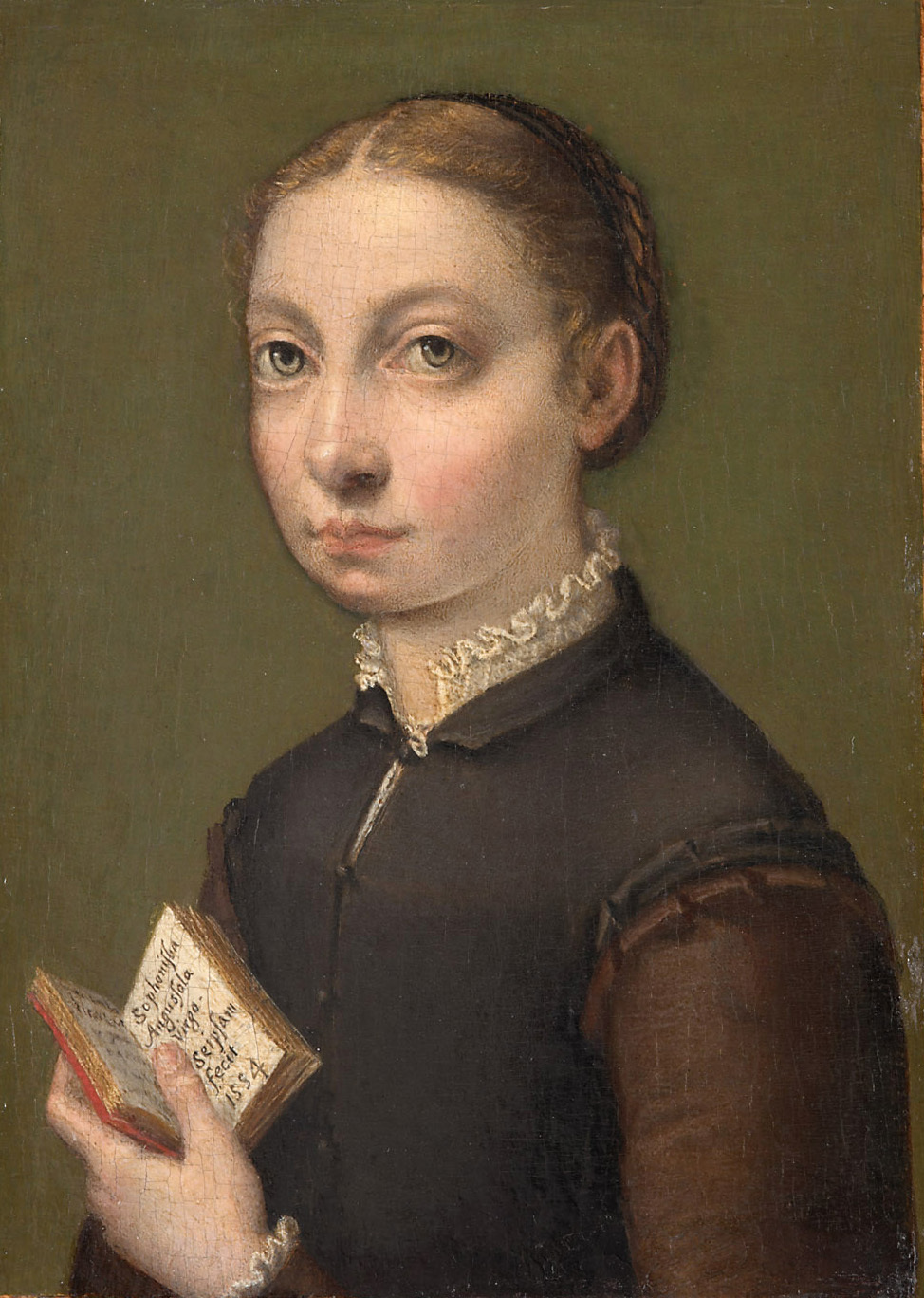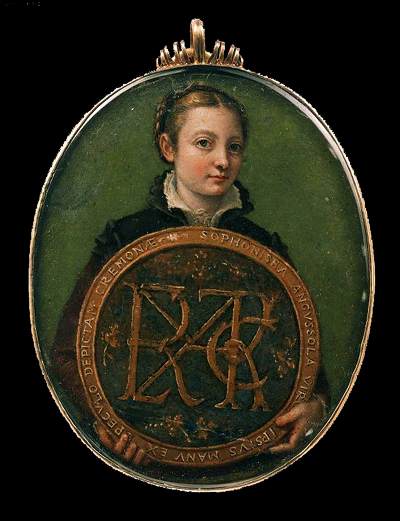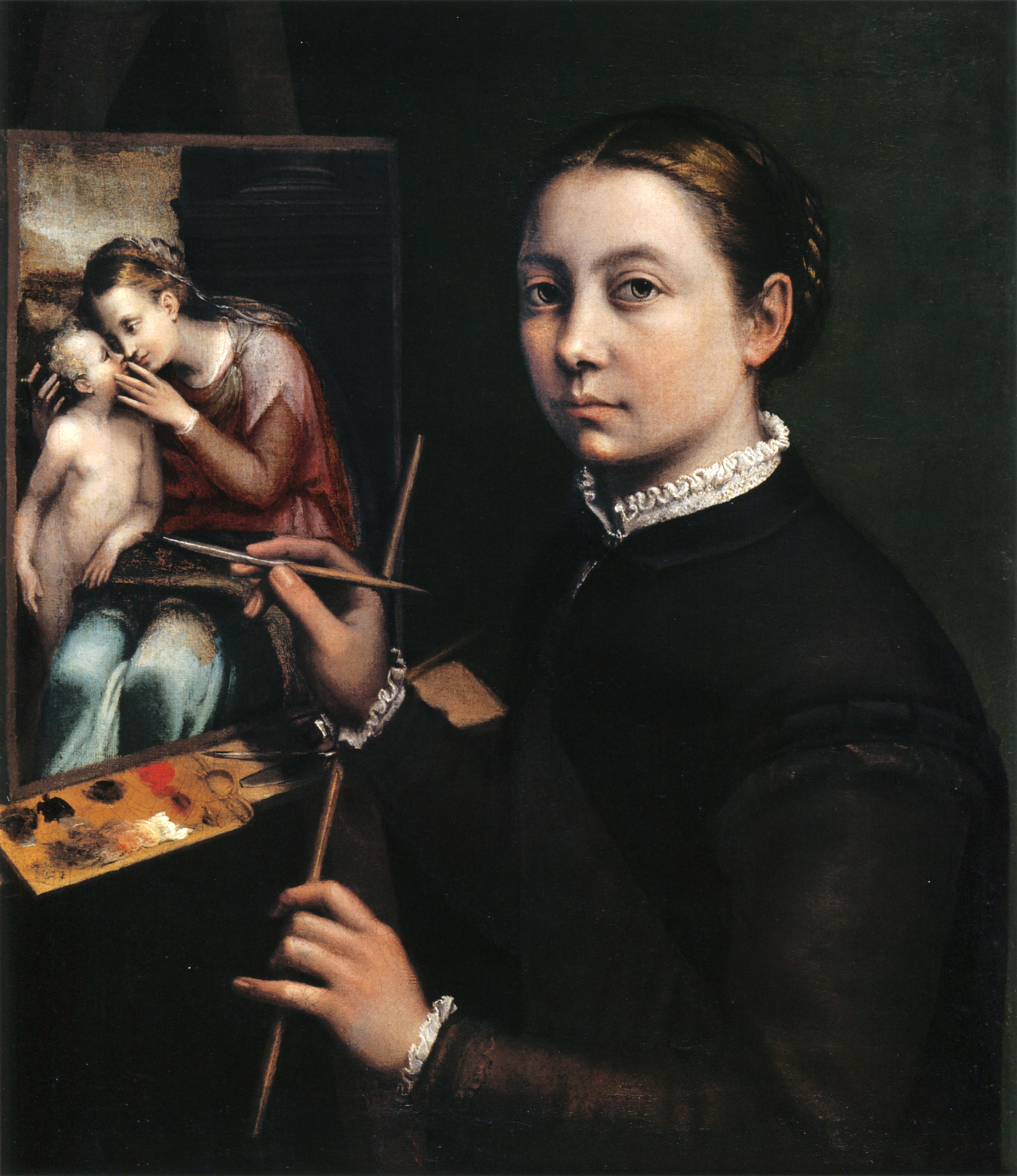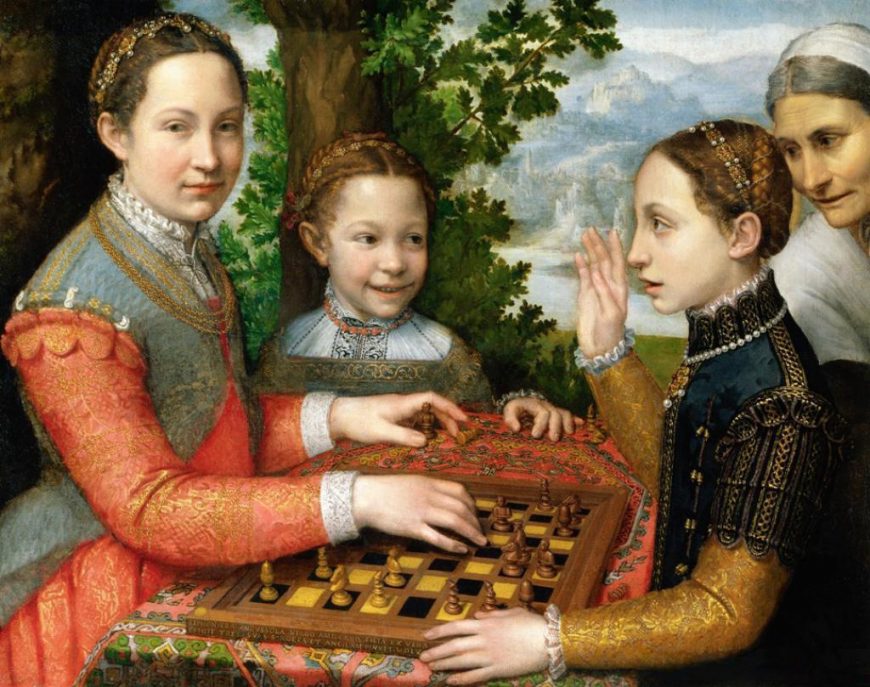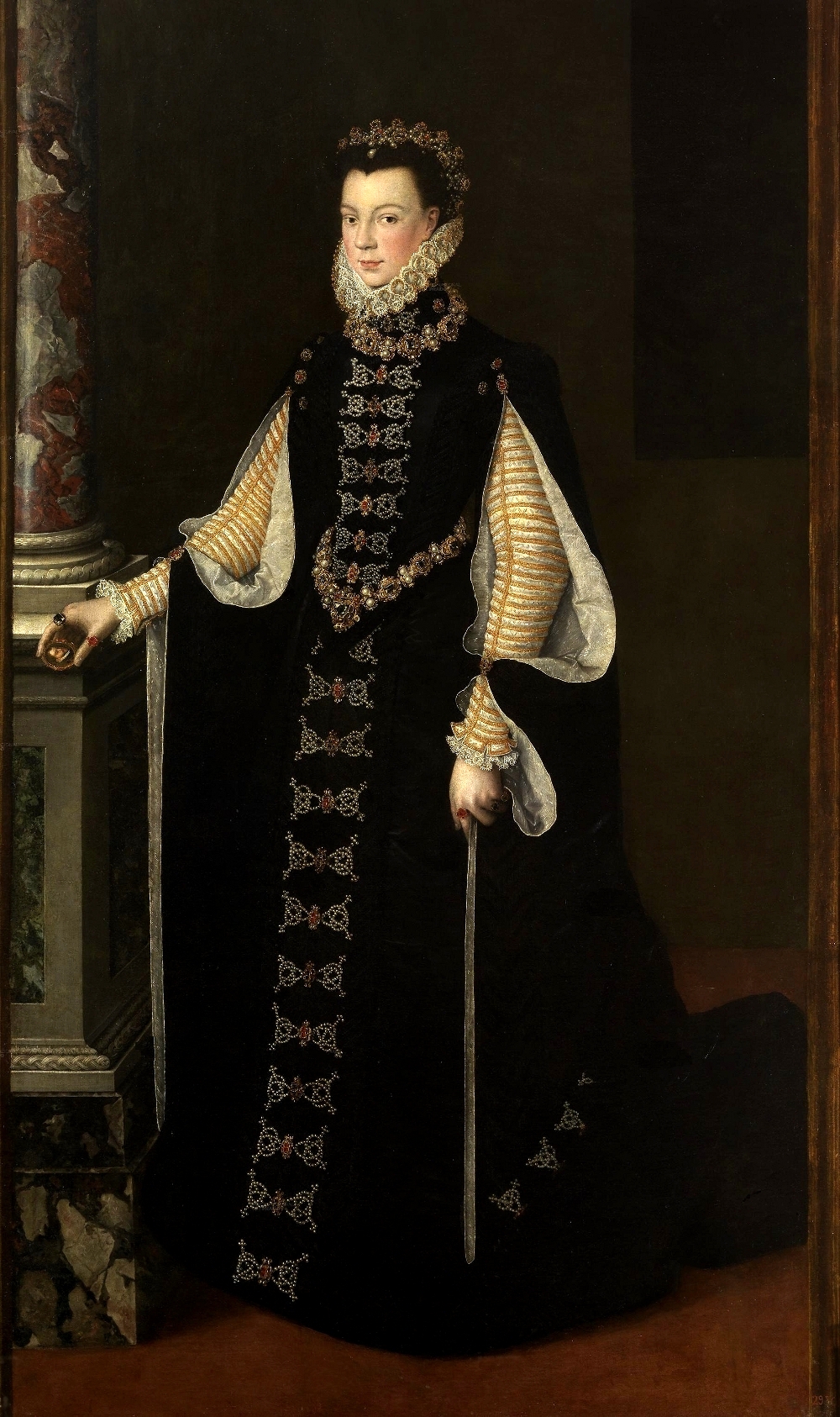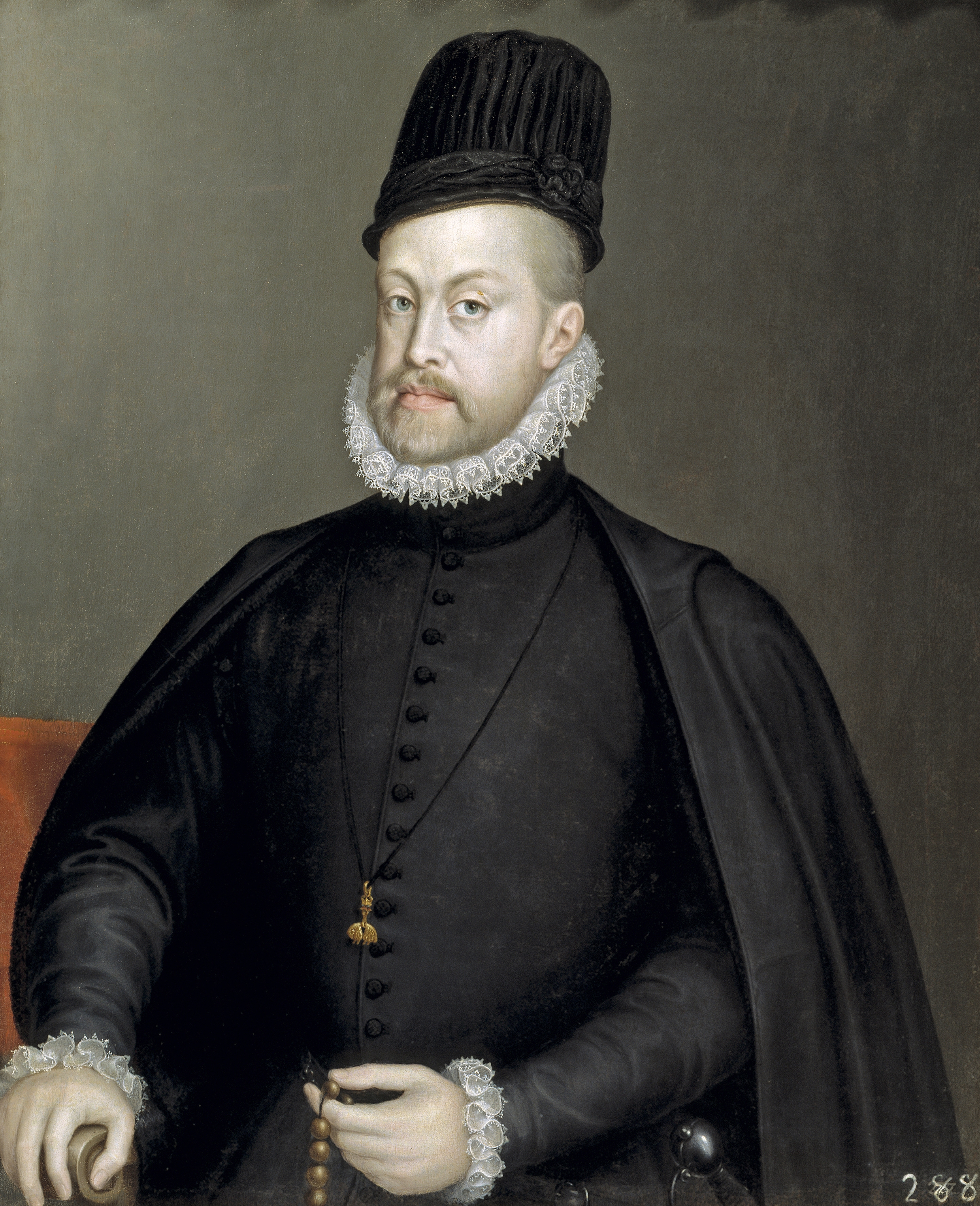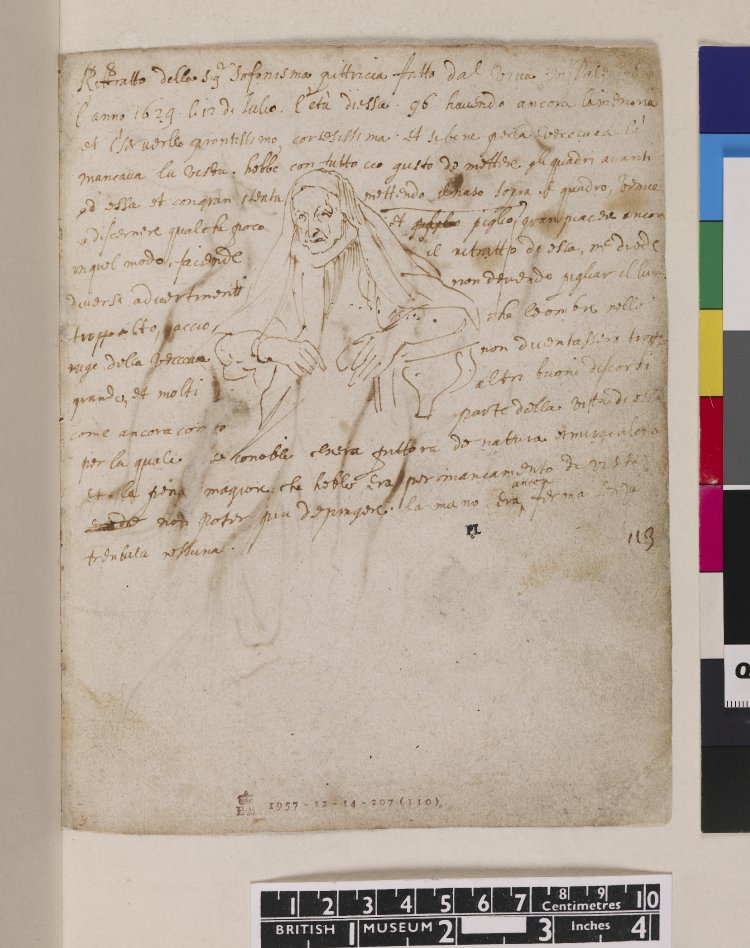CURIOUS CALLBACK: Episode #20: Sofonisba Anguissola: Great (Woman) Artist
Hi listeners! I’ve been traveling over last month, and am preparing to hit the road again, and to begin sharing new episodes to your feed next week. So, things have been a bit busy over here. So while we put the finishing touches on next week’s episode, I’m re-airing one of my old favorites from the first season of the podcast. And guess what? It’ll prepare you nicely for the next season. Wink wink. Today, I’m returning to share the story of Sofonisba Anguissola, one of the most prominent female artists of the Italian Renaissance. I hope you enjoy--and back to you next week. Until then, stay curious!
SPONSORS
BetterHelp: Get 10% off your first month of counseling
The Barnes Foundation: For a limited time, get 10% off your first Barnes Class when you visit our link
Recommended Reading
Please note that ArtCurious is a participant in the Bookshop.org Affiliate Program, an affiliate advertising program designed to provide a means for sites to earn advertising fees by advertising and linking to bookshop.org. This is all done at no cost to you, and serves as a means to help our show and independent bookstores. Click on the list below and thank you for your purchases!
Links and Other Resources
Italy Magazine: Sofonisba Anguissola- A Renaissance Woman
Smarthistory: Sofonisba Anguissola
ArtNews: Why Have There Been No Great Women Artists?
National Museum of Women in the Arts Blog: Challenge Accepted: Can You Name Five Women Artists?
Episode Transcript
Earlier this spring, I saw a hashtag making the rounds online, especially on Twitter and Instagram. Half the time, I only just vaguely pay attention to the trending terms on social media, but this one hit me right away. For a lot of people, including myself, it was like seeing an old beloved friend again- because this isn’t a new hashtag. It’s over a year old and was initiated originally by the National Museum of Women in the Arts in Washington, D.C. in conjunction with Women’s History Month, celebrated every year in March. It read #5womenartists and was meant as a kind of dare. As the museum’s digital editorial assistant, Emily Haight, posted on their blog, quote, “Ask someone to name five artists and responses will likely include names such as Warhol, Picasso, van Gogh, Monet, da Vinci—all male artists. Ask someone to name five women artists, and the question poses more of a challenge.”
It’s a sad, but true, statement. Can many of us--especially those without in-depth artistic training or interest-- really name five or more women artists? Maybe, if you’re lucky, you can remember Frida Kahlo or Georgia O’Keeffe. And bonus points if you can recall our previous discussion on Elisabeth Vigee Le Brun. But especially in terms of artists who were around prior to the 20th century, the game grows much harder.
Why? What’s the problem of the woman artist? And how can we fix it?
Some people think that visual art is dry, boring, lifeless. But the stories behind those can be paintings, sculptures, drawings and photographs are weirder, crazier, or more fun than you can imagine. Art History is full of murder, intrigue, feisty women, rebellious men, crime, insanity, and so much more. And today, we’re talking about women artists-- the historical difficulties in becoming an artist, the challenges present therein, and the limitations and legacies of one very important Renaissance painter. Exploring the unexpected, the slightly odd, and the strangely wonderful in Art History, this is the ArtCurious Podcast. I'm Jennifer Dasal.
Nearly fifty years ago, the journal ArtNews published an article by art historian Linda Nochlin that created a firestorm within the art community. It was the early 1970s, and emboldened by the rise of second wave feminism in the U.S. and elsewhere, Nochlin began her article by asking one simple question: Why have there been no great women artists? This article is a classic in art history classrooms throughout the world, and if you were to read only one article pertaining to feminist art theory, this is probably it. At first glance, it seems like the question itself is kind of funny-- or maybe it’s been asked ironically, or facetiously at the very least. But it turns out that Nochlin wasn’t trying to make fun. She was trying to be very, very serious. The article showed that there are several ways of trying to undermine or refute this question of great women artists-- the first is to highlight women artists--or artists of any other minority group, whether in terms of race, gender, sexuality, creed, or the like-- and then bring them to the surface. Then, these “hidden figures of art history” will be revealed for the great geniuses that they actually are. Or, at least, that’s the big hope, right? The second way of shining light onto this question of “Why have there been no great women artists” is to bring forward the deeper biases and underlying assumptions that the question actually reveals.
Because here’s the real thing that Linda Nochlin says in her iconic article: yeah, maybe there haven't been any great women artists-- “great” being the most important word. There really isn’t a female equivalent to Michelangelo, or Picasso, or Rembrandt or Van Gogh, even though all of these artists had women creating in their communities and even worked alongside some of their male compatriots. But big-name, internationally recognizable artist status? That’s just not something that women have achieved. And why is that? Well, it’s simple, at the very bottom of it: because there have been so many biases against most women throughout history that the deck was stacked against them. How could a woman become a great artist, for example, when she didn’t have the education, the opportunities, the support that she needed to rise to the level of the very best?
Let’s step back for one little aside and note that this question of bias isn’t just limited to women artists. It’s directed, really, at any artist, especially those prior to the 20th century, who wasn’t male, white, and descended from the European tradition of art. But the thing that’s still shocking, as an art historian, is how slow things are to change. The imbalance still carries over in contemporary art today. In her book, After the Revolution: Women Who Transformed Contemporary Art, author Eleanor Heartney looked specifically at the issue of gender imbalance in exhibitions at museums and galleries throughout the United States. She noted that since the 1970s, historians have made much more headway in identifying women artists and furthering the study of these artists’ works. But she also performed a research study that is, I think, very revealing: she looked at the number and percentage of solo art exhibitions, separated by gender, over the last four decades. It turns out that in the case of both museums and galleries, solo exhibitions devoted to women are still significantly lower than those devoted to men—and this is still going on half a century after the so-called feminist revolution. Women are still being shown in museums half as much as men are, at best—in many situations, it seems that they’re being represented only a third as much.
So the issue of gender, specifically, is complicated in terms of art history. But so is the concept of greatness, in and of itself. What does it mean to call someone a great artist? Essentially, greatness is really just another way of saying genius-- someone who is so incredible at what he (or she) does that they are considered leaps and bounds above us common folk in their creation or thinking. A few episodes back, we looked at the concept of the muse-- those goddesses who were the original sources of inspiration to poets, musicians, and artists of all types in the Classical worlds of Ancient Greece and Rome. The muses were thought to bestow their celestial gifts onto us mere mortals-- and that’s how the great works of art and literature were created. But somewhere along the line, that thinking shifted away from the gods and back towards us humans. My money’s on the Renaissance, by the way, as the critical time period here, but things certainly got worse during the Enlightenment of the 18th century when genius essentially became codified. A narrative surrounding gender-- what is is, what it isn’t-- was constructed. And here it is: anyone who is an actual, honest-to-goodness genius is just born with it--their talents are innate and just bubble up and out of a person. Genius can’t be learned or taught-- but then, it also can’t be contained. Here’s what you’re typically going to see with an artistic genius: ready for it? The artist, at a young age, is seen as a wunderkind, and comes under the wing of some incredible and/or famous teacher. But - almost immediately - the instructor has a “come to Jesus” moment where he realizes that his student is already so naturally great that the student has surpassed the master. You’ve heard this all before. I mean, really, it’s a common trope in like every martial arts movie, at the very least-- the pupil becomes the teacher. And if you’re a longtime listener of this podcast, it should already sound familiar to you, because this is the same exact origin story that was told about Leonardo da Vinci AND Michelangelo in episodes one and four, respectively.
It’s a nice concept, though, right? It’s super-romantic. But guess what-- it’s also a total myth. Though many people might have an innate talent, it’s rarely expressed in raw, unencumbered genius. To become an artist, you’ve got to work at it-- really work at it-- and that was as true even for the Renaissance masters as it is for an art student today. Back before there were legit art schools, there were apprenticeships-- and you could apprentice with a painter or a sculptor the same way that you could apprentice with a blacksmith or a baker. And even if he was freakishly amazing, naturally, an art apprentice would still have to toil for hours each day, copying his master’s works, doing assignments in perspective or color or figure drawing, and even assisting in his teacher’s own commissions or creations (and not getting the credit for it, of course). When it comes down to it, there was this whole system in place-- of instruction, of patronage, of reasons and means-- that allowed an artist to make it. This system is still in place today, though it is much more democratic, even if it isn’t perfect. But who wasn’t part of that system? Mostly, women weren't. For many, art was considered a trade, or a bankable job-- if you were really good, you could make your living with commissions from church, state, or private, wealthy individuals. And who really made these kinds of livings? Men. What did women do? Well, a number of things, but mostly they got married, cared for young children, maintained their households or were otherwise engaged in domestic cares and so-called women’s work. But they certainly didn’t get outside the home much, and certainly not to pursue training to become fine artists.
Even among these burdens and restrictions, some incredible exceptions stand out. In fact, the artist and writer Giorgio Vasari-- you know, the guy who is thought to be the first artist biographer for men like Donatello and Michelangelo, and who paved the way for modern art history-- it turns out that he actually discusses four women in his compilation of Italian Renaissance art, Lives of the Artists, which was originally published in 1550 and was expanded about twenty years later. That Vasari profiles four women is actually rather shocking to me, because this completely refutes the idea that there weren’t incredible, important, respected, and also well-known women working during the Renaissance. Sure, it wasn’t common for women to be artists, but some were, and they were also deemed critical enough that Big Man Vasari wrote about them.
The most well-known of the artists mentioned by Vasari-- and possibly the most well-known woman artist before the 18th century-- is Sofonisba Anguissola, a painter born in 1532 in the Northern Italy town of Cremona. Anguissola was one of seven children--the eldest, in fact--and raised in a noble and affluent household. And that, right there, if your first tip-off that she could become a great woman artist-- she had the money and the means to do so. The second important facet to her artistic development? Her father. Seriously, I don’t mean to go all John Mayer on you guys, but fathers? Be good to your daughters, and be ambitious for them-- don’t treat them differently because they are girls. Papa Anguissola certainly believed in this credo at a time when it wasn’t common to do so. He was atypical in that he encouraged his daughters, as well as his son, to cultivate and perfect their cultural talents. It had enough of an impact that all six of Sofonisba’s sisters became painters, but Sofonisba was the most accomplished and renowned by a landslide.
How did she accomplish the feat of becoming a successful working artist in Renaissance Italy? It turns out that in this way, too, Sofonisba was doubly atypical. The vast majority of female artists, all the way up into the 20th century, started down the path because their fathers, or brothers, were artists themselves, and so these women could pick up the skills of the trade in a casual (and even secret) way at home. But Papa Anguissola wasn’t an artist. Instead, he supported her educational interests by asking two well-respected local painters to make an exception to their usual apprenticeships and to take on his daughter as a pupil. And with that, Sofonisba received a total of three years of professional artistic training. And she may have even had more than that. According to the fantastic website Smarthistory, there is an existing letter from May 1557 in which Sofonisba’s father wrote to Michelangelo-- yep, THAT Michelangelo, thanking the artist for the QUOTE, “honourable and thoughtful affection that you have shown to Sofonisba, my daughter, to whom you introduced to practice the most honourable art of painting.” As Smarthistory reminds us, what’s totally clear is that Sofonisba met with Michelangelo, but who knows how long the meeting or connection lasted. It could have been a day, or perhaps, as some have suggested, it could have been its own longer-term apprenticeship. We may never know for sure. But we do know that as an artist, she was lauded enough that she got some major attention-- and so much so that she was able to garner a position as lady-in-waiting to the Queen of Spain, Elisabeth de Valois, and continued to paint officially for the court, and unofficially for herself, until she left Spain during the reign of King Philip II in 1571.
We’ve already established that Sofonisba Anguissola, as a general rule, was unique in her situation and training for the time in which she lived. But guess what--she was also unusual in one of her choices of subject matter: herself. Though artists during the Renaissance would paint the occasional self-portrait or two, Sofonisba painted herself at least twelve times. Twelve! And as the folks at Smarthistory write, it wasn’t until Rembrandt came along a century later that the concept of self-portraiture as a major segment of an artist’s output became a big deal. Sure, maybe you’d paint yourself once or twice, but as a consistent part of your work, no. Sofonisba, then, was ahead of the game. But for me, I have a theory as to why this is the case. In at least one of her self-portraits, she represents herself in action, as an artist-- in particular, Self-Portrait at the Easel, from 1556, has her in the process of painting a traditional Virgin-and-Child scene, paintbrush poised, and with the artist looking directly at us, point-blank. She’s well-groomed, with somber clothes and a serious expression as her dainty hand curls around her brush, prepping to dab a little more paint onto her already refined scene. What I see here is that she has portrayed herself as a virtuous and upstanding society woman-- someone poised and proper. But, she’s also showing herself to be someone who is treating her vocation as a painter with the utmost respect and significance. And by meeting our gaze, she expects us to do the same for her, as if she’s saying, “This isn’t my hobby. This is my calling.”
Like nearly all women artists prior to the 19th century, Sofonisba Anguissola was barred access to painting or drawing from male models-- especially nude male models-- forget about that. So, besides painting herself, she could really only look to her immediate surroundings for inspiration. Because of this, her family members were her other primary subject matter. In my personal favorite of Sofonisba’s works, called The Chess Game, from 1555, the artist presents a scene with three of her sisters--Lucia, Europa, and Minerva--playing the titular game while an older woman, presumably their governess, looks on. It’s a fun and rather charming scene-- and each of the figures is shown in a different pose, at different ages, and with a variety of texture and materials in their dresses. That, combined with the fantastic landscape backdrop of the scene, fully illustrates just how talented Sofonisba was as a painter to be able to pull off all of those variations of design. But that's not all-- this painting is also filled to the brim with girl power. Sofonisba’s sisters aren’t standing around doodling or gossiping or sewing. They’re involved in something far more surprising. Their older sister specifically chose to represent them playing chess on purpose-- because it is a supremely intellectual game, and it was associated with eggheads all the way back in the Renaissance, just as it is today. But back then, such intellectual pursuits were often considered too rigorous or too cerebral for women to understand, let alone even actively play. And of course only gentlemen of leisure and good breeding were really supposed to be able to play such a highfalutin game. But here, we see that a chess match has been effectively completed by three young women-- girls, actually. The eldest sister, Lucia, standing at the left, moves her hand across the chessboard, looking to us--the viewers-- with a relaxed, confident smile, while her opponent, middle sister Minerva, raises her hand in surrender. The littlest sister, Europa, grins at Minerva, showing her teeth in a show of unrestrained glee, understanding the skill--and the thrill--involved in this defeat.
What seems, on the surface, to be a simple scene is, then, seen to be anything but. Sofonisba was making an active choice in depicting this game, and showing her sisters engaging delightedly in it. These women are smart enough, and educated enough, to really get this complicated game. And as art historian Mary Gerrard notes in a 1994 article for Renaissance Quarterly, Sofonisba Anguissola was making an even bigger point about gender in this work via the game itself. Get ready for a deep dive about chess. Chess was originally introduced in Italy in the early part of the 16th century, when it became very popular very quickly among men of the aristocracy. But during that time, there were some changes made to the game that granted various chess pieces new abilities and movement options. The bishop, for example, was given the ability to move diagonally in an infinite number of spaces, when previously it was only allowed to diagonally one space at a time. These kinds of changes were small, but also made a big impact to actual game play and strategy. As Gerrard pointed out, though, the Queen was given the biggest advantage during this restructuring of the game. It was allotted the highest status and the most power of any of the chess pawns, now making it--the queen-- the most important piece, and even one that outshines the power of the king. So when the eldest sister, Lucia, takes hold of her sister’s queen, she looks out at us, the viewers, with a self-assured and steady gaze, because that little chess piece had just become a symbol-- a device meant to showcase the importance of women in society during a time when men were given all the rights, powers, and the goods. Women aren’t just pawns, literally and figuratively, Sofonisba and her sisters seem to say. They are actual game changers, and they deserved to be treated as such. If that isn’t a genius little bit of emblematic girl power, then I don’t know what is.
Sofonisba continued as an artist throughout her life, but things did slow down a bit, in terms of her creative output, after she moved on from the Spanish court in 1571. It was during that time period that Sofonisba got married to a man named Fabrizio de Moncada and together they moved to Sicily to begin their married life. From some surviving accounts, it looks like King Phillip II of Spain was so taken by the artist and her skills that he helped arrange her marriage to Moncada, whom was a warm and accepting husband who very much supported his wife’s career as an artist. Phillip the Second, too, acted as a patron of Sofonisba’s and allowed her a royal stipend to continue working even after her move to Sicily. Incredible. And continue working she did, producing portraits for the aristocracy throughout Europe, and increasing steadily in her fame and popularity. All the while, she also brought in income as a teacher, providing pupils with artistic instruction throughout her long life. Two years after Moncada died in 1579, she married again, and this time, it was for love; she married a widower sea captain named Orazio Lomellini, and together they lived, first in Genoa and then in Palermo, until Sofonisba’s death at the unbelievable age of 93 in 1625.
In the year before she died, Anguissola, who had continued to paint herself up to 1610, when she was 80, had her own illustrious portrait done by a famous artist. On July 12, 1624, when she was 92 years old, she was visited by the Flemish painter Anthony van Dyck, who considered her a great teacher and influential artist. Van Dyck sketched Sofonisba’s image during their visit, which he later translated into an oil painting now in the collection of Knole House in Kent, England. You can see images of both the sketch and the final painting on the ArtCurious website. What’s evident is that Sofonisba was very old-- but she looks alert and engaged. And indeed Van Dyck himself noted in his sketchbook that her eyesight had weakened significantly, but that her mental faculties were still acute. She was still strong enough, in fact, that she was able to give the young painter some invaluable advice about his painting technique. Van Dyck later said that this conversation taught him Quote “more about the true principles of painting than anything else in life.” Anthony Van Dyck himself is one of those great artists of the Northern Baroque period. And if this great artist was so inspired and learned so much from Sofonisba Anguissola, then we should definitely consider her one of the greats, as well.
Thank you for listening to this episode of the ArtCurious Podcast, a proud member of the Modest Pod Network. This episode was written, produced, and narrated by me, Jennifer Dasal. Our production and editorial services are provided by Kaboonki Creative. Video. Content. Ideas. Learn more at K-A-B-double O-N-K-I dot com.
The ArtCurious Podcast is fiscally sponsored by VAE Raleigh, a 501c3 nonprofit creativity incubator. This means that you can donate to the show and it is fully tax-deductible! And until the end of May, I have a donation challenge. This month, I’m looking to raise $25-- that’s the price of a couple of movie tickets and some popcorn-- so that I can get a little social media advertising out there. $25. Can you help? Please see our website for further details-- and you can also go there for images and information for today’s show and links to our previous episodes. That site is artcuriouspodcast.com. Contact us via the website, email us at artcuriouspodcast@gmail.com, or find us on Facebook, Twitter and Instagram at artcuriouspod. Please tell anyone about the show in any way that you want--and remember to subscribe and review us on iTunes.
A lot of what I hope to do with this podcast is to open up the world of the visual arts to a bigger audience-- especially those who typically don’t feel that interested in it. And luckily, I’m not alone in this endeavor. There’s a great community of people out there who are hoping to democratize art and art history, bringing it to life, making it fun, showing its relevance. I personally was thrilled when I discovered art historian Ellen Oredsson’s great blog, How to Talk About Art History and was charmed by her “It’s Easier Than It Seems” tagline. So, we struck up a conversation. Today’s special episode of ArtCurious is the end result of this-- a collaboration, and Ellen has her own contribution to this topic on her blog. She’s looking five artists, inspired by the five women artists hashtag, and briefly discussing why each has been left out of the traditional art historical canon. Check it out on her site-- that’s howtotalkaboutarthistory.com.
And now for some big news. We’re taking a break for a couple months so that we can prep for an all-new season of ArtCurious. Yes, a season, an actual “season,” like many of your other favorite podcasts! We’ll be rebroadcasting a couple of our older episodes over the next few of weeks, as well as releasing some bonus behind-the-scenes content, but we’ll be returning in late July with an all-new thematic season that’ll take us through the rest of the year. We are incredibly excited about it and I bet you will be, too. So to make sure that you don’t miss anything, subscribe now on iTunes or wherever else you get your podcasts, and you’ll be the first to know when we are back.
And please join us in two months when we release a new season exploring the unexpected, the slightly odd, and the strangely wonderful in art history.



